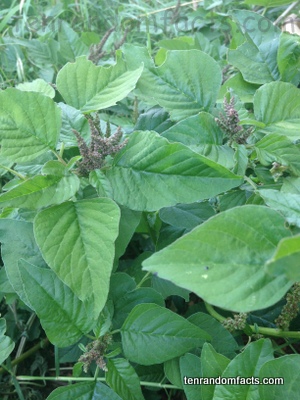Green amaranths: a weed here or a food there.
- Green amaranth is an annual herb that is generally believed to be native to tropical America.
- Green amaranth comes from the family Amaranthaceae, the family of amaranths.
- Green amaranths have the scientific name ‘Amaranthus viridis’, and ‘amaranthus’ comes from the Greek word meaning ‘everlasting’ or ‘unfading’ and ‘viridis’ is Latin for green’.
- ‘Green amaranths’ are also known as ‘slender amaranths’, ‘green pigweed’, and ‘Prince of Wales feathers’.
- Green amaranths grow to be 0.3 to 1 metre (1 to 3 feet) in height, and green and yellow dye can be made from the plant.
- Green amaranths have green notched leaves and tiny flowers that grow in clusters on spikes, and the flowers are a green or brown to pink colour.
- Green amaranth fruits are small and round and do not open to release the small black seed they contain.
- Green amaranths flower mainly during warm, summer months, however flowers can be seen throughout the year, depending on the region it is grown in.
- Green amaranths are significant weeds in many countries, growing in gardens, cracks, disturbed areas, and in fields.
- Green amaranths are eaten in Greece, India and Africa, as a leafy vegetable, and are also used medicinally for a variety of purposes.
Bibliography:
Amaranthus Viridus, n.d, Some Magnetic Island Plants, http://www.somemagneticislandplants.com.au/index.php/plants/42-amaranthus-viridis
Green Amaranth, n.d, Herbiguide, http://www.herbiguide.com.au/Descriptions/hg_Green_Amaranth.htm
Jansen P, Amaranthus viridus L., 2004, Plant Resources of Tropical Africa, http://database.prota.org/dbtw-wpd/exec/dbtwpub.dllAC=QBE_QUERY&BU=http%3A%2F%2Fdatabase.prota.org%2Fsearch.htm&TN=PROTAB~1&QB0=AND&QF0=Species+Code&QI0=Amaranthus+viridis&RF=Webdisplay






